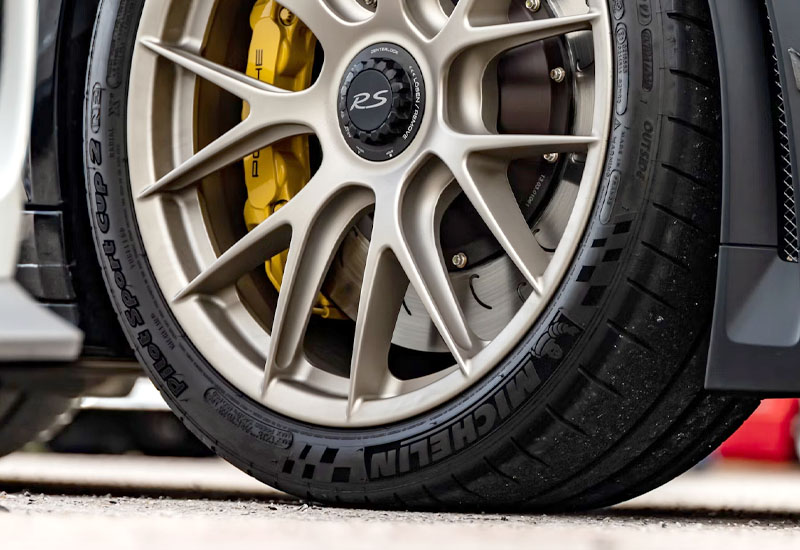So, you walk up to your car one morning, only to find that one of your tires is flat. The first thing that comes to mind might be, “How long can I leave it like this before something bad happens?” Well, you’re not alone in wondering that!
Many of us have been there—life gets busy, and dealing with a flat tire can feel like one more thing to put off. But here’s the deal: leaving your car on a flat tire for too long can lead to some serious problems.
In this blog post, we’re going to break down everything you need to know about how long a car can safely sit on a flat tire and why you should deal with it sooner rather than later.

The Impact of Leaving a Car on a Flat Tire
If you’ve ever had to deal with a flat tire, you know how inconvenient and frustrating it can be. But what happens when you leave a car sitting on a flat tire for too long? Believe it or not, it can cause quite a few problems, both for the tire and the car itself. Let’s talk about what really happens when a flat tire is left unattended.
Tire Damage: More Than Just a Simple Flat
First and foremost, when a car is left on a flat tire, the weight of the car is pressing down on a tire that is already deflated. This puts immense pressure on the sidewall of the tire, which is not designed to bear that kind of stress. Over time, this can cause permanent damage to the tire, including the development of cracks and other issues that might make the tire unsafe to use even after it’s been repaired or replaced.
Flat tires can also lose their shape when they sit under pressure for too long. Tires are made to hold air and maintain their round shape, but without air, they tend to become misshapen. This can result in a tire that doesn’t hold air properly when reinflated or one that wears unevenly once it’s back on the road.
Damage to the Wheel and Suspension
It’s not just the tire that’s at risk. The wheel itself can be damaged from sitting on a flat tire for an extended period. When the car is resting on a deflated tire, the wheel is often forced into the ground or pavement. This can lead to dents, bends, or cracks in the wheel, which may not be immediately noticeable but can lead to long-term issues.
Additionally, the suspension system of your car can suffer. The suspension is designed to absorb shocks and bumps on the road, but if a car is left sitting in an abnormal position (like on a flat tire), the suspension components may become stressed or misaligned. This can result in expensive repairs down the line and even affect how your car drives.
Brake System Trouble
Did you know that leaving a car sitting on a flat tire could potentially affect your car’s brake system? It’s true! Over time, the brake system can begin to seize up if the car is left immobile for too long. The combination of heat, humidity, and the pressure of the car resting unevenly on a flat tire can cause parts of the brake system, like the rotors or calipers, to rust or corrode. When you finally do go to drive your car, you may notice decreased brake performance or even damage that requires costly repairs.
How Long Is Too Long? Understanding the Risks
Now that we understand some of the potential issues that can arise from leaving a car on a flat tire, let’s dive into the big question: how long is too long? Can you just leave it for a few days? A week? A month? Well, it really depends on a few factors, but generally, the longer you leave your car in this condition, the worse the damage gets. Let’s take a look at the timeline of what can happen and why acting sooner rather than later is crucial.
First 24 to 48 Hours: Not Ideal, But Not Critical Yet
If your car has only been sitting on a flat tire for a day or two, it’s not the end of the world. During this period, the tire will start to lose its shape, but it’s not likely to sustain permanent damage. The main issue here is the pressure being placed on the sidewall of the tire, so while it may not cause severe damage in the short term, it’s definitely not good for the tire. If you can, try to move the car onto a jack or put a spare tire on it as soon as possible.
3 to 7 Days: The Damage Starts to Add Up
By this point, things are getting a little more serious. After a few days of sitting on a flat tire, the rubber may begin to crack, and the sidewall could start showing signs of permanent damage. Additionally, the weight of the car resting on the deflated tire might cause the wheel to become misaligned or dented. Suspension issues can also begin to crop up at this point, as the components will be forced into an unnatural position. If you’ve left your car for this long, it’s time to take action and get the tire fixed or replaced.
Beyond a Week: You’re Asking for Trouble
Leaving a car on a flat tire for over a week (or even longer) is a recipe for disaster. By this point, the tire will likely be beyond repair, and the wheel could also be damaged beyond salvaging. The suspension system might also suffer more extensive wear, and you could even have issues with the brake system. To put it simply, the longer you wait, the more expensive the repairs could be. It’s always best to take care of the problem before things get to this point.
Factors That Can Affect the Timeline
While the general rule is that the sooner you take care of a flat tire, the better, there are some factors that can affect how quickly damage occurs. For example, if your car is sitting in extreme heat or cold, this can speed up the degradation of the tire. Similarly, if the car is on an uneven surface or exposed to heavy moisture, this could exacerbate the damage.
What to Do If Your Car Has Been Sitting on a Flat Tire
So, what if you’ve already left your car sitting on a flat tire for longer than you should have? Don’t worry—there are still steps you can take to fix the issue and minimize the damage. Here’s what you need to do.
Assess the Situation
Before you do anything, take a good look at the tire and the car. Is the tire just flat, or is it visibly damaged? Can you see any cracks or punctures? Check the wheel to see if it looks bent or damaged. Make sure the suspension system is intact and hasn’t suffered too much damage from the weight of the car pressing down on the deflated tire. If the damage seems minor, it might be worth trying to repair the tire, but if the tire or wheel is severely damaged, it may be time to replace them altogether.
Jack Up the Car and Replace the Tire
The first step in fixing the issue is to lift the car off the flat tire using a car jack. This will relieve the pressure on the tire and prevent further damage to the wheel and suspension. Once the car is lifted, remove the flat tire and replace it with a spare or a new tire. If you’re not sure how to do this, there are plenty of tutorials online, or you can call a professional for help.
Inspect the Tire and Wheel for Further Damage
Once you have the car on a new tire, carefully inspect the original flat tire and the wheel for any damage. If the tire can be repaired, you can take it to a tire shop for patching. If not, you may need to replace the tire altogether. The wheel should also be checked for any cracks, dents, or other signs of damage. If you find any, you may need to replace the wheel as well.
Get the Suspension and Brake Systems Checked
Even if the tire and wheel look okay, it’s a good idea to have your car’s suspension and brake systems checked by a professional. These parts may have suffered from the strain of sitting on a flat tire for too long, and you want to make sure everything is in working order before you hit the road again.
I hope this article helps you understand just how long a car can sit on a flat tire and why it’s important to take action quickly. The longer you wait, the more damage can occur, and trust me—you don’t want to end up with costly repairs that could have been avoided. So, the next time you find yourself with a flat, take care of it as soon as possible!
Frequently Asked Questions
Is it safe to drive on a flat tire for a short distance?
If you absolutely have to drive a short distance on a flat tire, it’s better than leaving the car sitting. But be aware that driving on a flat tire can damage the tire further and risk the safety of your car, so it’s not ideal.
Can a flat tire be repaired if it has been sitting for weeks?
It depends on the extent of the damage. If the tire has been sitting for weeks, there could be cracks or permanent damage to the rubber, making it impossible to repair.
Do I need to replace the wheel if it’s been sitting on a flat tire?
If the wheel is bent, cracked, or visibly damaged after sitting on a flat tire, it’s best to replace it. If it looks fine, it may be salvageable.
Is it dangerous to leave a car on a flat tire for more than a week?
Yes, leaving a car on a flat tire for more than a week can cause significant damage to the tire, wheel, suspension, and brake system.
Can a flat tire affect my car’s alignment?
Yes, leaving a car on a flat tire can cause misalignment in the suspension system, affecting how your car drives.
Do I need to jack up the car before replacing the tire?
Yes, you should jack up the car to relieve the pressure on the flat tire before removing it and replacing it with a new one.
Is it okay to temporarily use a spare tire after a flat?
A spare tire is meant for temporary use only, so it’s fine to use one while you get your flat tire repaired or replaced.
Can I prevent my car from getting flat tires?
While you can’t always avoid flat tires, keeping your tires properly inflated and regularly checking for damage can reduce the risk.


